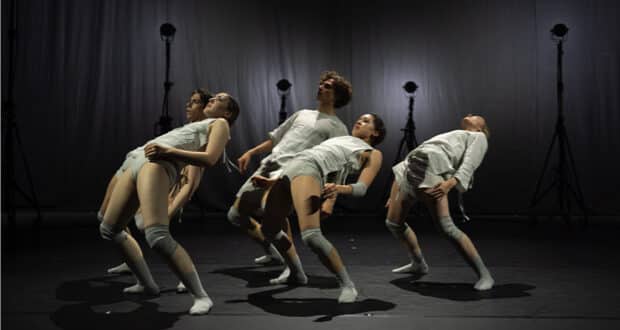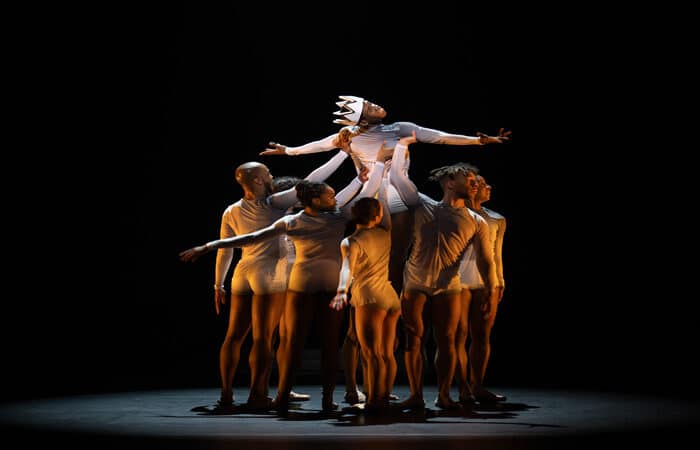Sadlers Wells
Kicking off (quite literally) the 20th year of the Flamenco festival Sara Baras devours the stage. 12 concerts, performances, and shows provide a snapshot of the branching tree that is this enigmatic dance form. What could get you more in the mood for summer than this flash of cultural heat?
Baras is a legend and a major exponent of flamenco-ballet worldwide. She’s been everywhere and done everything, including the record holder for the most performances (200) at the iconic dance theatre Paris Champs-Elysees, which is a cool badge to have. By the end of the evening, another erstwhile award will be hers also. World domination has been well and truly ticked off on this woman’s to-do list.
In a genre that rewards wisdom and seniority, what does Baras bring to the table both as a performer and now as director/choreographer? What has won her this shelf of Spanish and international awards, and the right to start such a momentous event?
Well, I will tell you. A gifted band on her right, we are welcomed by a swinging fringe curtain and a spot. All a good dancer needs really. Baras stands, in a spotted dress like a monochrome monarch butterfly, posed ready for flight. But mixing my similes (as always) she is more comparable to a very chic leopard ready to spring. Her movements are rapid and controlled, passionate yet measured, a coiled thing of prey. Spinning with arms held in a half box shape above her head, fingers splayed helicoptering them around as her long jet-black ponytail sways and her nose points to the ground. Mesmeric….and her feet, did I mention her feet? They deserve their own paragraph.
Beetle black heels click at a pace and friction to put to shame the best steppers of 42nd Street (running in the same space on alternative nights). As the bolero songs wail, she clacks those devilish stumps in rhythms from electro-thumping to castanet clacking. How can the tapping of a heeled shoe on an amplified floor craft such meaning? I am in awe; do we have the same things on the end of our ankles, I wonder. I think not.
Aside from being a titanic presence as a performer, as a good director she surrounds herself with talent. Although perhaps still maintaining her dancer mentality as she makes sure she is centre stage for most of the evening. Singers Rubio De Pruna and Matías Lopez ‘El Mati’’s hearts are broken vocally as their cracking calls underscore the various vignettes. Keko Baldomero and Andrés Martínez’s fingers fly like insects across the string of their Spanish guitars. Diego Villegas’s saxophone solo although lengthy is a highlight of virtuosity, as Baras duets with the gleaming metal horn (and man) centre stage.
The choreography is playful, the evening is mischievous with the explicit quality Flamenco and bolero always share. A sensuality, and nonconformity that has been sustained despite its absorption into mainstream Spanish/Cuban artistic life. The 6 dancers shine in the sections they get. Especially where the female dancers (5:1 women to men) are seen backstage changing from the blue water nymph skirts of the last number into bullfighting uniforms. Their androgynous slicked-back hair works perfectly in this deconstruction of gender roles. They drag their heels along the floor and pick and preen at their black jackets, an intriguingly birdlike imitation of men. Baras herself dons a glittering lapelled red suit jacket for another swift section of role reversals, an utterly exciting number.
A triumph of passion, hard work, and skill everyone clearly relishes the chance to be onstage after the break imposed by that thing that rhymes with Daytona. But this exuberance is the show’s slight undoing. Building in momentum alone centre stage Baras’s cascading feet, frantically ticking and tapping herself into a wonderful finale pose. 3 spots converge, her black tiered dress swishing slowly and her gaze and right arm raised straight up in defiance. A real “I’m still here moment”, we jump to our feet enraptured. The perfect ending…
…Or so we thought. There are 15 minutes more. A slower piece with the whole troop, the aforementioned saxophone duet, a clap for each musician, a Flamenco rendition of Queen’s “The Show Must Go On” (ironically) and a small meal (the last one is a joke sadly). Even the curtain won’t stop this troupe as they are called back on to receive the Olivier Award they won in 2020 but were unable to claim. Undeniably touching. However, the lack of editing and the many different endings rather loosens the satisfying knot tightened so carefully by Baras and her company. We require only one ending, and the constant standing up and sitting back down again plays havoc with not just the audience’s knees but also our patience.



